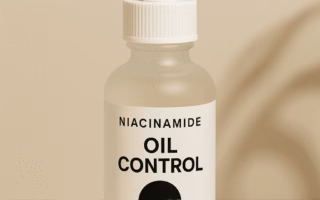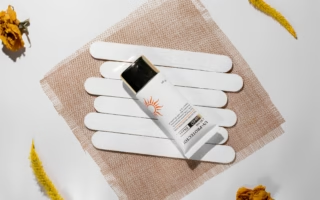Hyaluronic acid (HA) has become a cornerstone in skincare, wellness, and anti-aging routines. From serums to joint injections, this naturally occurring molecule promises hydration, plumpness, and overall skin and joint health. In this comprehensive guide, we explore what hyaluronic acid is, how it works, its benefits, usage, side effects, and expert insights.
What is Hyaluronic Acid?
Hyaluronic acid is a naturally occurring glycosaminoglycan, a type of molecule found in connective tissues, skin, and eyes. It’s known for its unique ability to retain water, holding up to 1,000 times its weight in moisture. This property makes it essential for maintaining skin elasticity, smoothness, and hydration.
“Hyaluronic acid is one of the most effective ingredients for hydration in dermatology,” says Dr. Emily Peterson, a board-certified dermatologist.
Hyaluronic acid is available in multiple forms:
- Topical serums and creams for skin hydration
- Injectables for dermal fillers and joint treatment
- Oral supplements for systemic benefits
Benefits of Hyaluronic Acid for Skin
1. Deep Hydration and Skin Plumpness
Hyaluronic acid draws moisture into the skin, making it appear plump and youthful. Regular use of HA serums or creams improves skin texture and reduces dryness.
2. Anti-Aging Effects
By maintaining hydration, HA reduces the appearance of fine lines and wrinkles. It also supports skin elasticity, making your skin look firmer and more supple.
👉 Calculate Your Anti-Aging Risk
3. Helps with Acne-Prone Skin
Hyaluronic acid is non-comedogenic, meaning it won’t clog pores. It can soothe inflamed skin and accelerate healing after acne breakouts.
4. Improves Skin Barrier
HA strengthens the skin barrier, preventing moisture loss and protecting against environmental stressors.
Hyaluronic Acid for Joints and Overall Health
Hyaluronic acid isn’t just for skin; it plays a vital role in joint health. Its lubricating properties make it effective for osteoarthritis and joint discomfort.
- Knee Injections: Used to relieve pain and improve mobility in osteoarthritis patients.
- Oral Supplements: May support joint health and reduce stiffness.
Clinical studies from PubMed, indicate that HA injections can significantly reduce knee pain and improve function in osteoarthritis patients.
How to Use Hyaluronic Acid
Topical Application
- Cleanse your face thoroughly.
- Apply HA serum on slightly damp skin to maximize absorption.
- Layer with moisturizer to lock in hydration.
Pro Tip: Apply HA before oils or creams for best results.
Combining with Other Skincare Actives
- Retinol: HA can be applied alongside retinol to prevent dryness and irritation.
- Vitamin C: Apply HA after Vitamin C serums to maintain hydration.
- Niacinamide: Safe to use together; HA enhances moisture retention.
“Hyaluronic acid is a versatile hydrator that complements almost all active ingredients,” explains Dr. Peterson.
Hyaluronic Acid Products
- Serums: Most popular form for targeted hydration.
- Creams & Lotions: Provide overall moisture and are suitable for dry skin.
- Injections: For cosmetic fillers or joint therapy.
- Supplements: Oral capsules or powders support overall hydration and joint health.
Safety, Side Effects, and Precautions
Hyaluronic acid is generally safe for all skin types and has minimal side effects. However, a few precautions exist:
- Pregnancy & Breastfeeding: Usually safe; consult your doctor.
- Allergic Reactions: Rare, but possible in injectable forms.
- Acne Concerns: Non-comedogenic, but check formulations with additives.
Hyaluronic Acid vs Retinol
While hyaluronic acid hydrates, retinol promotes cell turnover. Using them together can reduce retinol-induced dryness and irritation.
Pro Tip: After sealing in hydration, consider topping your routine with a tallow-based moisturizer, a natural occlusive that mimics skin lipids and prevents transepidermal water loss.
Hyaluronic Acid FAQs
Yes, HA can be applied after Vitamin C to lock in hydration.
Daily application is safe and recommended for optimal hydration.
HA improves skin hydration and elasticity, supporting scar healing over time.
Oral HA may improve joint comfort and skin hydration, though results vary.
HA itself is non-comedogenic, but formulations with oils or silicones may clog pores.
Expert Advice
- Dr. Emily Peterson, Dermatologist: “Incorporating hyaluronic acid into your skincare routine is one of the simplest ways to maintain hydration, reduce fine lines, and support skin elasticity.”
- Nutritionist Sarah Lee: “Oral hyaluronic acid supplements can be beneficial for joint health, especially for those with osteoarthritis or athletes under strain.”
Final Thoughts
Hyaluronic acid is a multi-functional powerhouse for skin, joints, and overall hydration. Whether you use serums, creams, injections, or supplements, HA enhances skin plumpness, reduces fine lines, and supports joint health. Pairing it correctly with other actives like retinol, vitamin C, or niacinamide maximizes benefits while minimizing irritation
Incorporate hyaluronic acid into your daily routine to experience the full spectrum of its hydrating and anti-aging effects.
✍️ Glownest Care Team
Written by GlownestCare Team – Our experts research and review skincare, wellness, and health innovations to provide professional, evidence-based insights for everyday use.
📖 Read More: Explore our latest skincare tips, haircare routines, mani-pedi care guides, overall beauty care advice, weekly glow tips, FAQs on trending topics, and handy beauty calculators to keep your glow strong.
🔗 Share This Post: Found it helpful? Share it with friends, family, or on social media to spread the knowledge and inspire healthier skin.
💬 Join the Discussion: Scroll down and leave your thoughts or questions in the comments – we’d love to hear from you!



